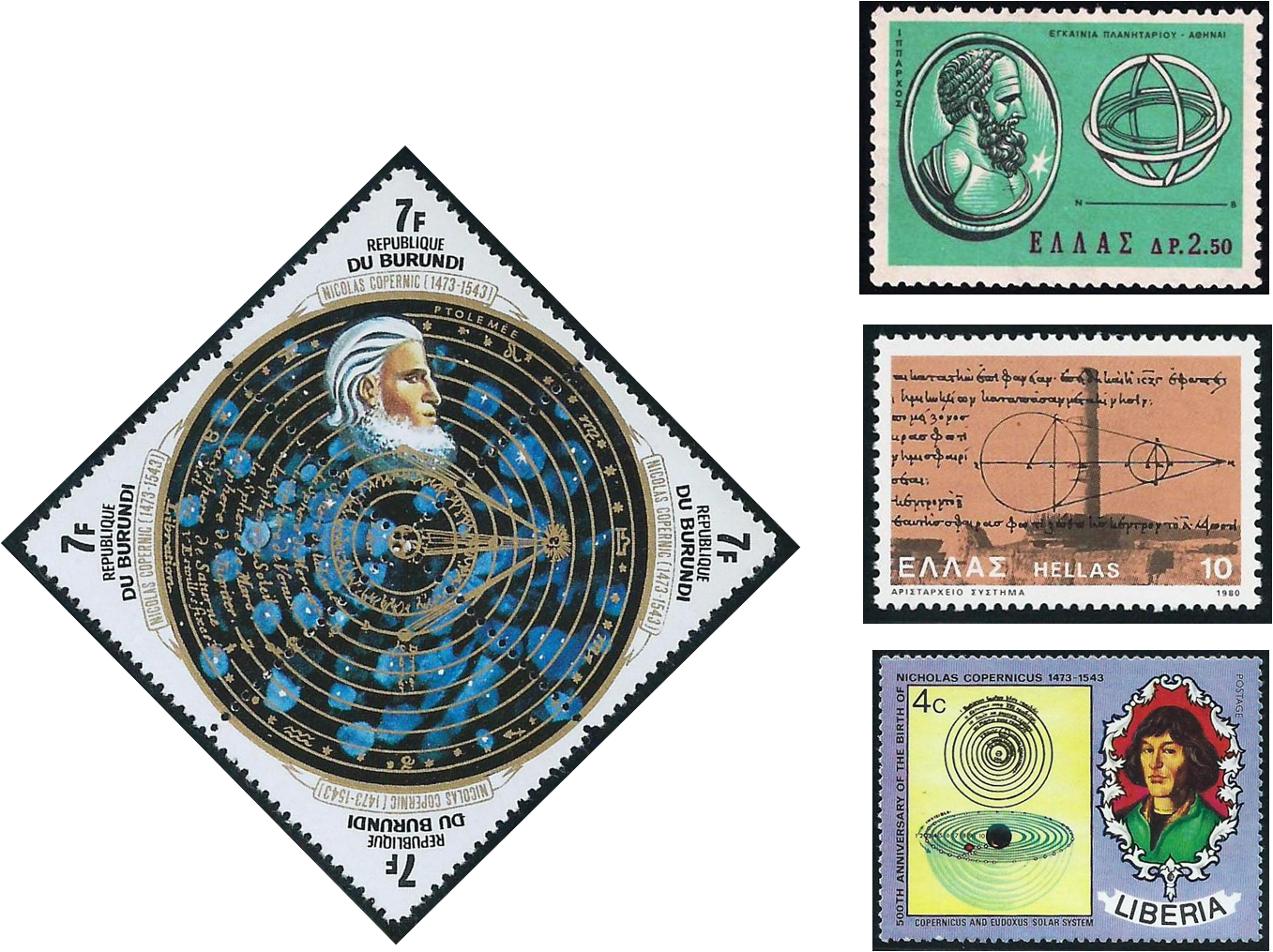Greek astronomy
The heavens were studied by a number of Greek scholars – in particular, Eudoxus, Aristarchus, Hipparchus and Ptolemy.
The mathematician and astronomer Eudoxus of Cnidus (408–355 BC) studied at Plato’s Academy and is credited with developing the theory underlying the books on proportion and the ‘method of exhaustion’ in Euclid’s Elements. In astronomy he advanced the hypothesis that the sun, moon and planets move around the earth on rotating concentric spheres, a hypothesis later adopted in modified form by Aristotle.
Aristarchus of Samos (c.310–230 BC) advanced an alternative hypothesis – that ‘the fixed stars and the sun remain unmoved and that the earth revolves about the sun in the circumference of a circle’. Aristarchus thus anticipated by 1800 years the revolutionary work of Copernicus, but his hypothesis found few adherents among his contemporaries.
The first trigonometrical approach to astronomy was provided by Hipparchus of Bithynia (190–120 BC), possibly the greatest astronomical observer of antiquity. Known as ‘the father of trigonometry’, he discovered the precession of the equinoxes and constructed a ‘table of chords’ yielding the sines of angles. He also introduced a coordinate system for the stars and constructed the first known star catalogue.
The earth-centred hypothesis was developed by Claudius Ptolemy of Alexandria (c.100–178 AD), giving rise to the ‘Ptolemaic system’. Ptolemy wrote a definitive 13-volume work on astronomy, usually known by its later Arabic name Almagest (‘the greatest’). It contained a mathematical description of the motion of the sun, moon and planets, and included a table of chords listing the sines of angles from 0° to 180° in steps of half a degree.
[Burundi 1973; Greece 1965, 1980; Liberia 1973]
Published/edited: 25/09/2015
